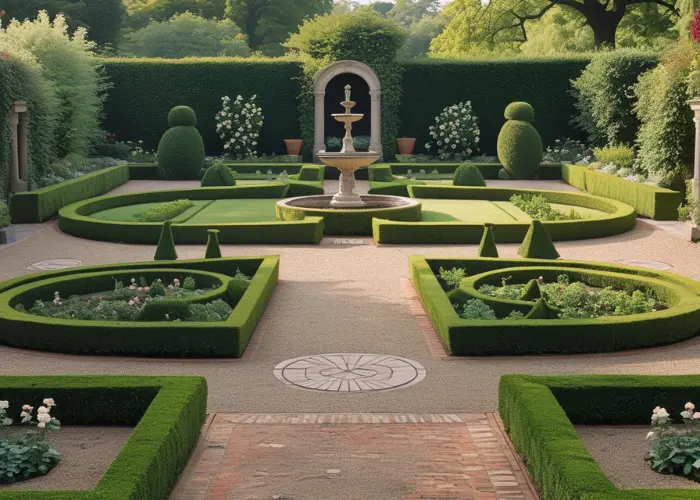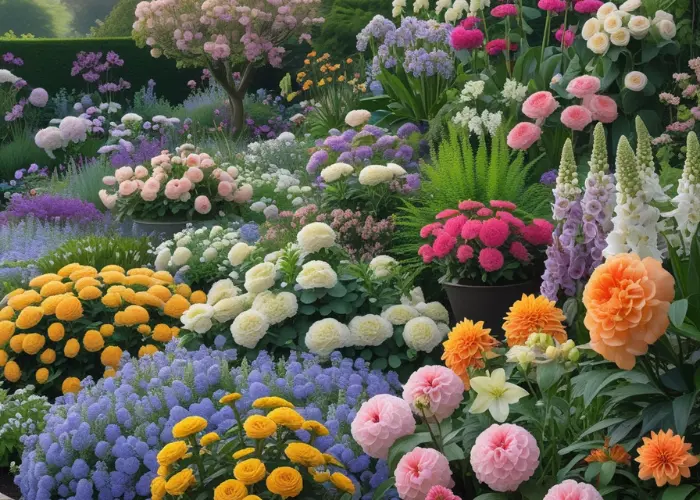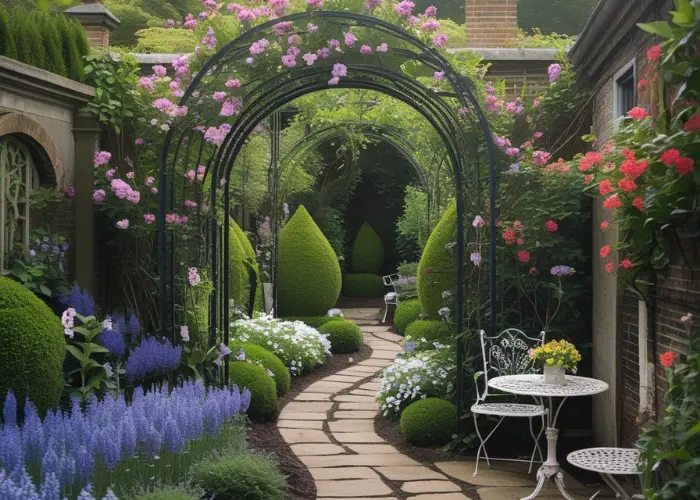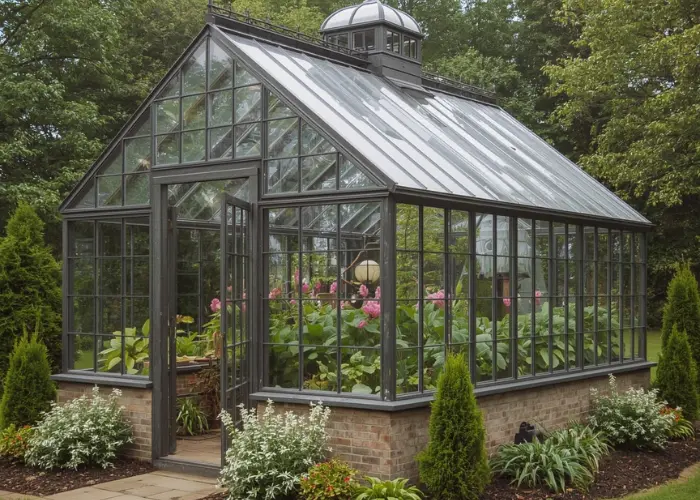Victorian Garden Design: 7 Timeless Elements for a Classic Backyard

Whether you’re a homeowner looking to infuse romance into your backyard or a designer seeking inspiration from the past, Victorian garden design offers a rich palette of ornamental elegance, botanical diversity, and structural charm.
Rooted in the grandeur of the 19th century, Victorian gardens reflect a time when nature was carefully curated and celebrated through symmetry, ornamentation, and a love of exotic flora.
In this article, we’ll explore the seven essential elements that define Victorian garden design—and how you can reinterpret them to create a timeless backyard space that exudes elegance and character.
Introduction to Victorian Garden Design

Victorian Garden Design was popular during Queen Victoria’s reign (1837-1901) during a time that was renowned for its acceptance of novel plant species extravagant structures, and care for ornamentation in the garden. The influence of The Industrial Revolution, these gardens became a showcase of class and imagination, as evidenced by formal layouts with decorative accents, as well as numerous flower displays.
Presently, Victorian Garden Design continues to inspire people who want an elegant, structured and romantic outdoor space. It’s a style which celebrates the beauty of both order and awe and provides a harmonious balance for any gardener.
Symmetry and Structure: The Backbone of Victorian Gardens

One of the most distinctive characteristics that distinguishes Victorian Garden Design is its organized arrangement. The design is influenced by classical geometry. the garden designs often show:
- Parterre and symmetrical garden beds. gardens
- Cutely clipped hedges of boxwood
- Formal borders made of ovals, circles or rectangles
- Brick or gravel pathways that divide the garden in elegant sections
Victorian landscapes employ symmetry not only for aesthetics however, they also serve as a practical reasons of maintenance. For instance, putting the stone fountain or cast-iron statue in the center of the garden and adjacent to it the same rose beds can create visually harmonious and warm and welcoming entry point.
Abundant Plantings: A Botanical Celebration

Victorian Garden Design celebrates botanical abundance. The time of global plant collecting brought a wide variety of native and exotic varieties in English gardens. The lush layers of flowering plants such as perennials, annuals, and groundcovers form a dazzling border that are bursting with colour and the appearance of.
Essential Victorian garden plants include:
- Heirloom Roses (‘Madame Hardy’, ‘Souvenir de la Malmaison’)
- Ferns (ideal for shaded corners)
- Hydrangeas
- Delphiniums
- Peonies
- Lilies
- Geraniums (Pelargoniums)
- Dahlias
- Chrysanthemums
- Foxgloves
- Hollyhocks
- Camellias
- Aquilegia
- Orchids (indoors)
- Rhododendrons and Azaleas
Design suggestion Mix perennial bedding plants with annual favorite plants to create beds that change in colors and add interest through the seasons. This is a characteristic design characteristic of Victorian Garden Design.
Winding Paths and Hidden Corners

Despite their formality Victorian garden spaces were full of surprises and romance. Arched trellises, and private sitting nooks made every walk an adventure of discovery.
For a re-creation of this attraction:
- Make use of meandering paths bordered with delphinium, lavender, and other topiary art
- Iron garden arches can be adorned in climbing flowers or the clematis
- Put away the bistro table, or a iron bench into an enviable corner
They encourage to slow exploration and contemplation. This is an important aspect in an Victorian Garden Design experience.
Ornamental Features and Victorian Garden Accessories

Victorian Garden Design was all about ornamentation and careful the smallest details. Each element was selected to add beauty as well as functionality.
The most popular accessories and structures:
- Iron benches made of wrought iron and cast iron garden furniture
- Planters, stone urns and Victorian garden statues
- Obelisks, sundials, and the classic busts
- Trallisses, pergolas, as well as ornamental gates for gardens
- Gazebos to relax in shade
- Garden fountains and birdbaths are focal points
These features do not just add historic authenticity, but they also direct the eye and help create gathering areas in the Victorian garden.
Water Features: Fountains, Ponds, and Reflection Pools

Water was a major element within Victorian Garden Design. The soothing sound of the sound of a tied stone fountain or the sparkling lake reflected the natural beauty of the garden, and created a tranquil ambience.
Some ideas to improve your Victorian gardening:
- Central fountains that have classic designs.
- Small goldfish ponds with small goldfish, surrounded by Irises and ferns
- Reflection pools set at the axis of the garden or in a tranquil corner
These water features reflect the era’s elegant style, they also draw wildlife and provide serene garden moments.
Greenhouses and Glass Structures

- The Industrial Revolution revolutionized the garden design through the introduction of glasshouses, also known as greenhouses, easily accessible. Then, in Victorian Garden Design, these structures held exotic plants, and exhibited the sophistication of the homeowner.
Create a Victorian-style greenhouse to seeds or for rare flowers - Make use of glass cloches to safeguard fragile plantsUse wrought-iron cold frames as well as bell jars for an historical touch.
Even a tiny glasshouse could provide a unique and useful addition for your yard.
Victorian Courtyards: Romance in Small Spaces
Small backyards and urban spaces can be a source of Victorian Garden Design by creating intimate courtyards.
Key elements:
- Trellises and espaliered trees can be used for vertical planters
- Ornamental pots brimming with fuchsias and pelargoniums and fragrant plants
- Flooring that is made of red brick bluestone or cobblestone
- A statement seating option is to think of coffee tables and marble bench seats
A Victorian courtyard brings the ambiance of the time into the most comfortable outdoor spaces.
Classic Victorian Garden Plants
Victorian Garden Design is defined by its exotic and vibrant color scheme of plants:
- Dahlias The trend of the Victorian time period; breed in hundreds of cultivars.
- Chrysanthemums They were introduced widely in the 1800s. They provide bold color.
- Roses The “queen” in Victorian gardens, used for borders and as vertical elements.
- Ferns Popular from 1840 to 1860, they add texture to areas of shade.
- Camellias The varieties with stripes and spots were highly sought-after.
- Orchids They are indispensable for conservatories and indoor displays.
- Azaleas and Rhododendrons They are ubiquitous within Victorian gardens and borderlands.
- Lobelias, Petunias, Aquilegia added bright colors and diversity.
Combine these traditional plants and modern choices to create an outdoor space that’s authentic and modern.
Creating Your Own Victorian Garden
To design a Victorian Garden today:
- Make use of shaped beds (ovals and rectangles), parterres) filled with vibrant bedding plants.
- Create a rockery for alpine plantation.
- You can grow exotic plants under glass, or make an indoor greenhouse.
- Plant in a garden cottage style, with beautiful borders and mixed species.
- Plant delicate Geraniums (pelargoniums) and Fuchsias in pots that are decorative.
- Include the wrought iron or stone features, such as benches or gazebos. You can also add statues.
- Utilize formal hedging and topiary to create a strong structure.
Keep in mind that Victorian Garden Design is about the imagination within a framework. So customize your garden while respecting the past.
Victorian Garden Design in the Modern Age
Modern gardeners can reinvent Victorian Garden Design using sustainable elements, native plants and sustainable techniques. It doesn’t require a huge property to be a gardener. A small backyard, balcony or a courtyard can create Victorian beauty with the right components.
Include water features, antique accessories, and plant the beds with a lot of layers to create a design that feels elegant and timeless. Combine old-fashioned design with contemporary design to make your garden functional and relevant.
Conclusion
Victorian Garden Design is a timeless representation of structure, beauty, and natural beauty. Based on the tradition from the late 19th century provides a design that combines formality and abundance, as well as historical appeal with contemporary. When you’re planning to plant your very first rose, incorporating an old-fashioned fountain or planning a complete backyard remodel, the principles that are a part of Victorian Garden Design will help to create a space that is captivating and lasts.
By blending symmetry with abundant flowers, winding paths old-fashioned features, and a variety of landscapes Your Victorian garden can be transformed into an artful work of art — a tribute to the eternal love between man and nature.
